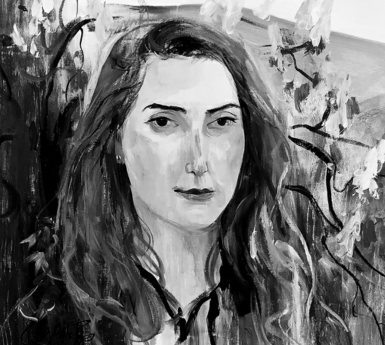 |
|
Portraits of people depicted by Wang Lei, who encounters his models randomly during his trips to cities along the Silk Road. [Photo provided to China Daily] |
Artist Wang Lei has spent the last three years documenting the Asian route of the ancient Silk Road by painting portraits of its people. Deng Zhangyu reports
Since 2015, oil painter Wang Lei has traveled along the Silk Road - an ancient network of trade routes that extended across Europe and Asia - to paint portraits of people from various cultures, a journey that the artist sees as a search for his own identity.
Over the past three years, monks, women in hijab, young men of Persepolis, the descendants of soldiers of the Roman legion, craftsmen, vendors and tourists have all been depicted by Wang during his trips to cities in China, Iran, Uzbekistan and Turkey.
The artist, who has just returned home to Beijing from his latest trip to Turkey, held a solo exhibition on Saturday at Beijing's Yishu 8, featuring faces painted along the Silk Road.
"My model can be anyone I encounter," explains the 41-year-old. "It's more than a portrait. It's a record of a person in the context of a certain culture."
It's the enrichment of culture, religion and art of the many cities in different nations along the Silk Road - and the frequent cultural exchanges - that inspired Wang's plan to travel and paint.
He started in Datong in Shanxi province, a cradle of Buddhist art where more than 5,000 sculptures of the sage reside in the Yungang Grottoes and the memory of these Buddha statues has influenced Wang's portraits. No matter whether he depicts men or women, each subject is given prominent ears, painted on purpose by the artist, to resemble those of the Buddha sculptures.
In the village of Liqian in Gansu province, Wang met a man whose appearance was identical to almost every other Chinese person with the exception of his striking green eyes. They reveal his identity to be that of a descendant of the Roman legionnaires that came to the region more than 2,000 years ago.
"We learn about the world, its history and its cultures mainly from books," Wang observes, "but there is a lot that books don't tell us, and we must find that out in person."
This is why he is impelled forward on his journey of discovery and believes that traveling is an important way to learn more about the world.